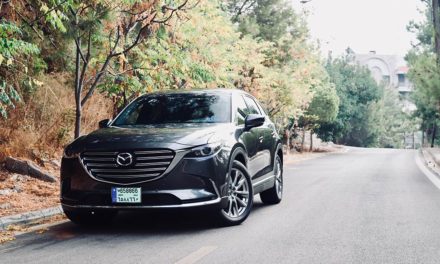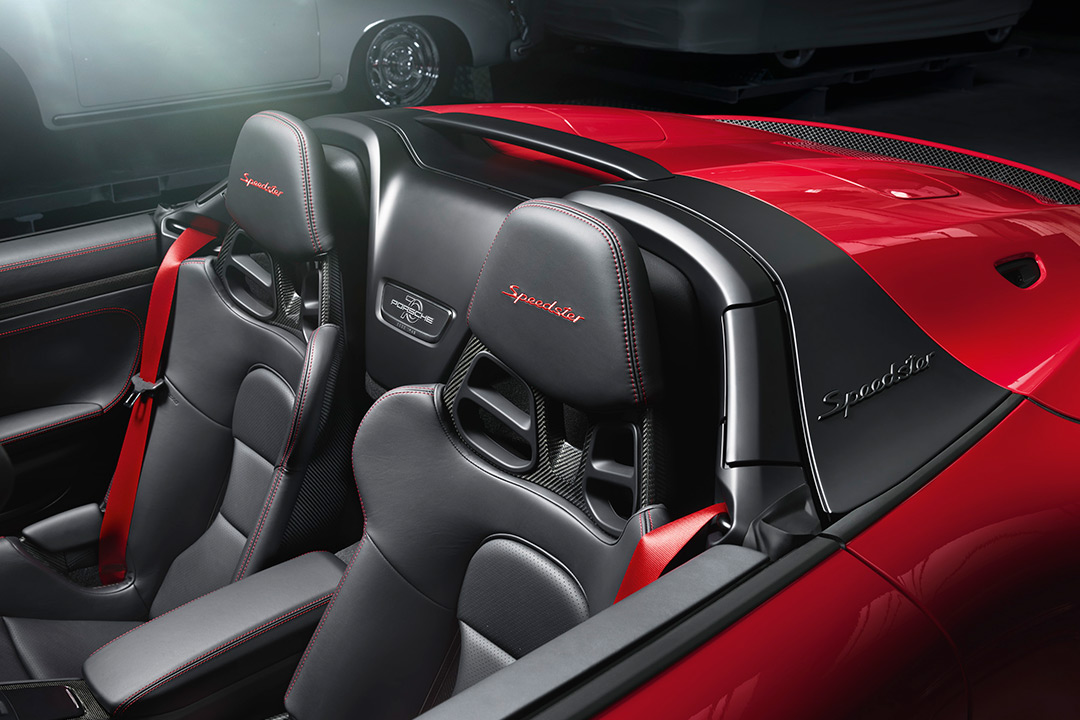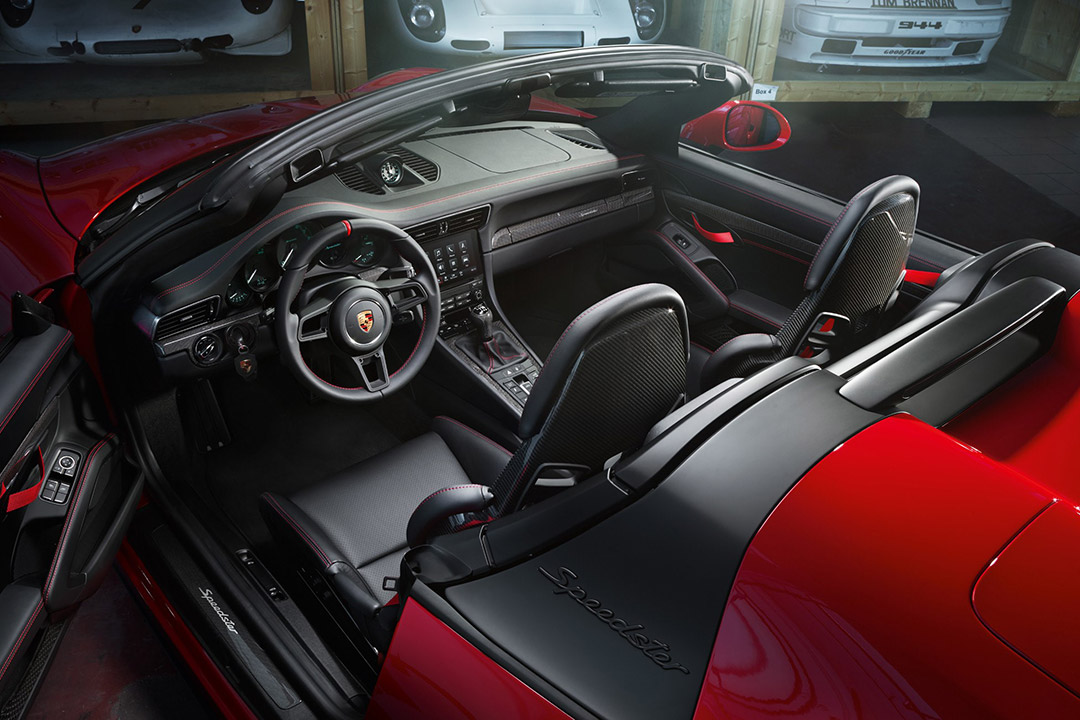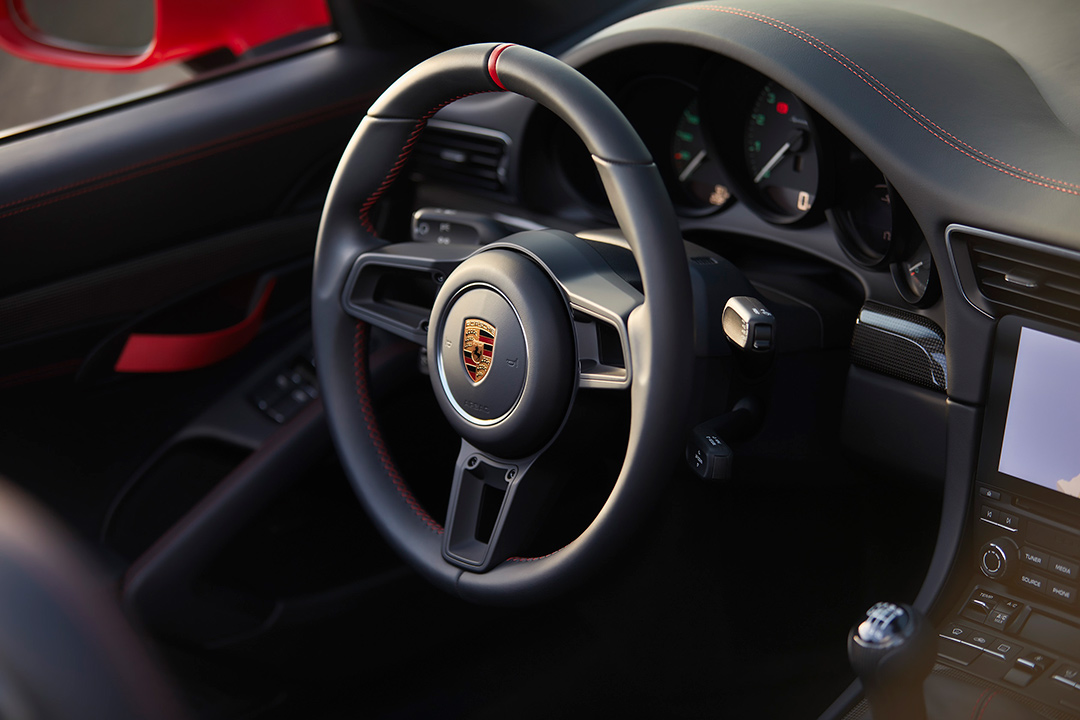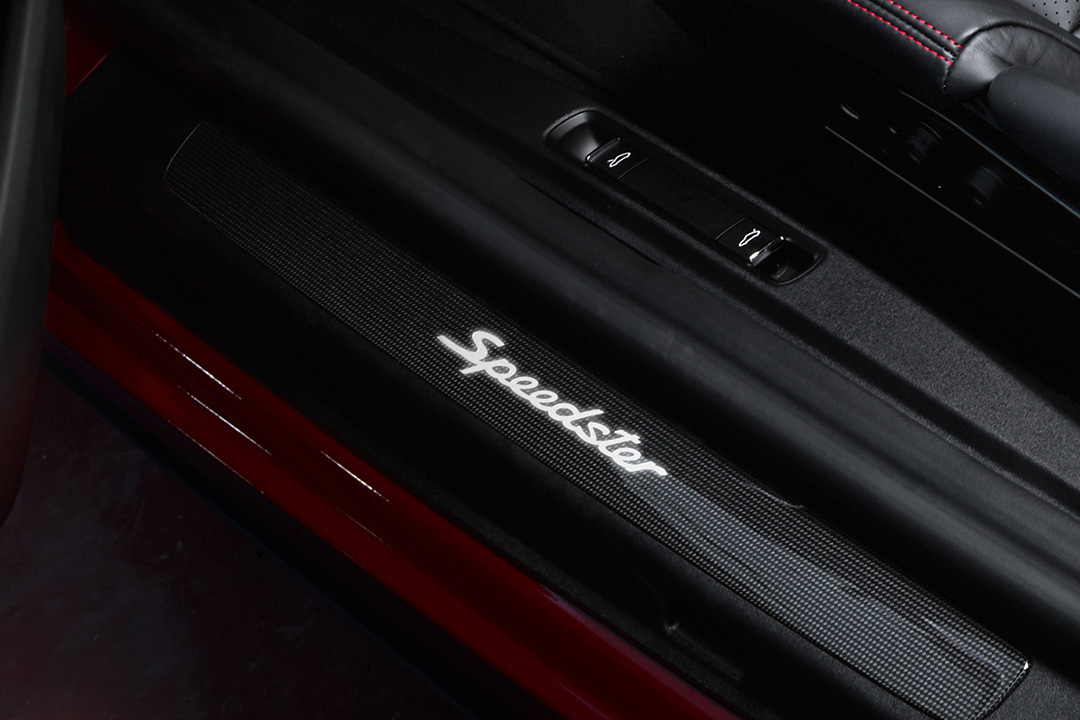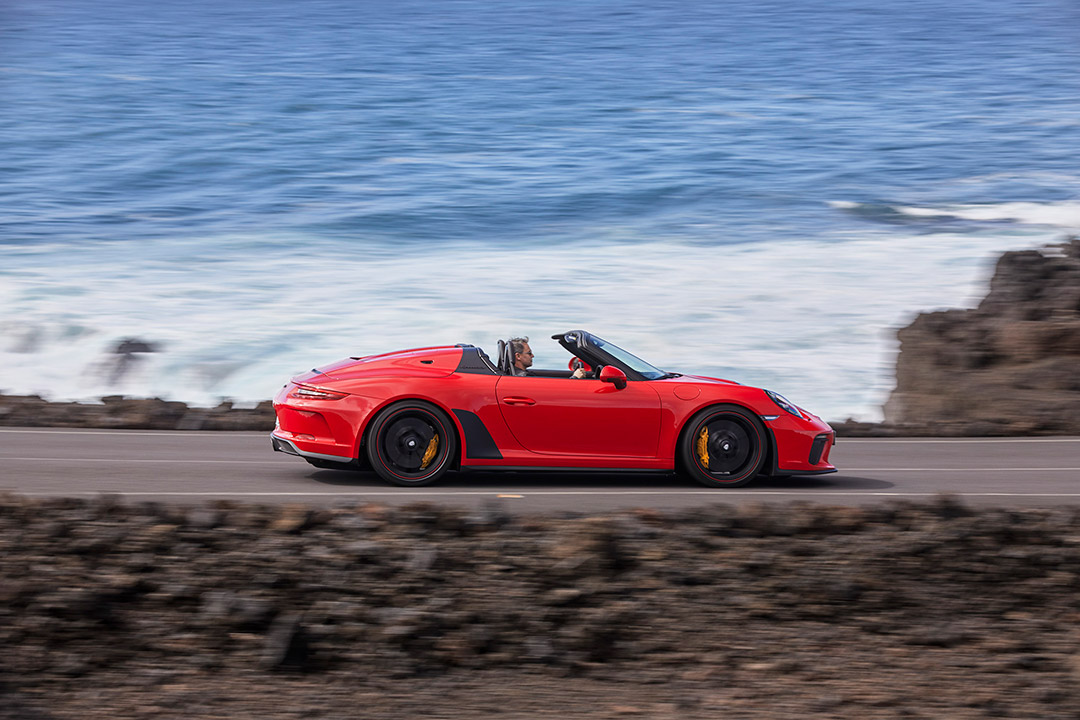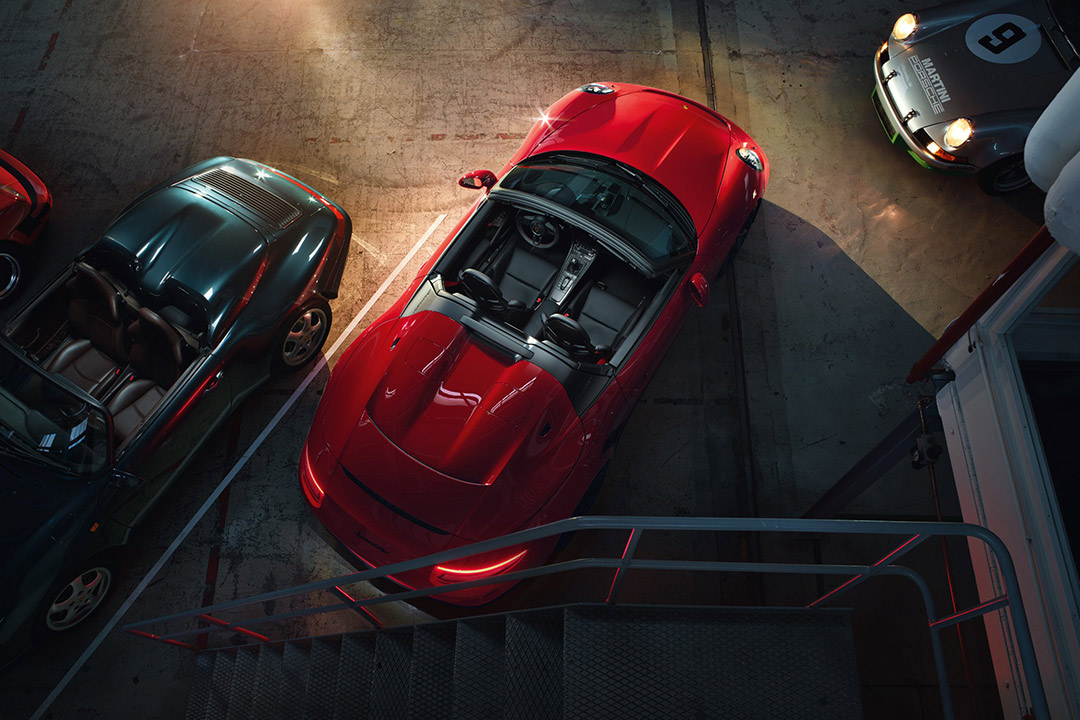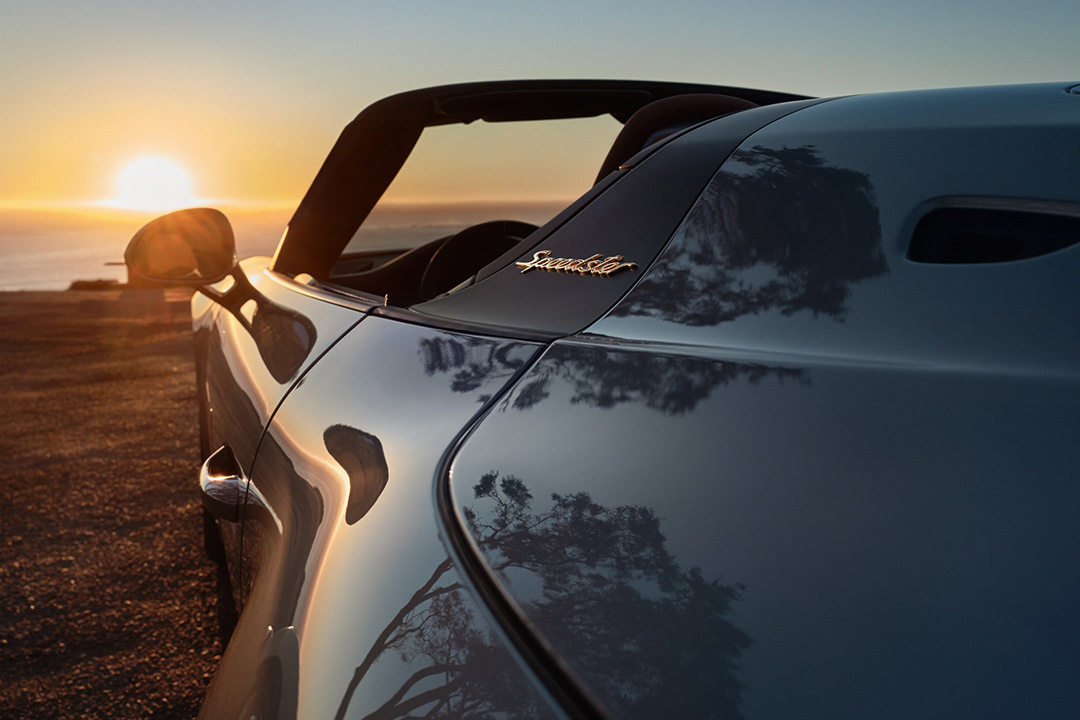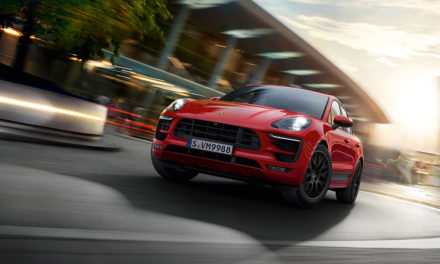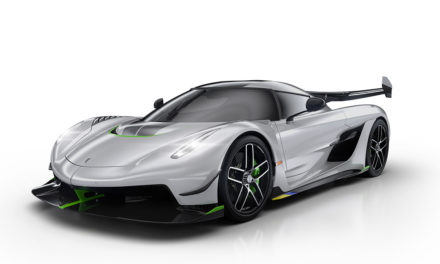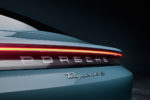PRESS RELEASE
DUBAI: The 911 Speedster caused a sensation when it was presented as a concept vehicle. Now Porsche is putting the open-top two-seater into production from mid-2019 at the Porsche plant in Zuffenhausen (Germany). The 911 Speedster combines the aspiration of a puristic, driver-oriented vehicle with motor sports technology suitable for everyday use. The 911 R (2016) and 911 GT3 served as a basis for development. A high-revving 510-hp 4-liter naturally aspirated boxer engine delivers an emotive sound experience in the cockpit. The six-speed GT transmission is shifted manually. Visually, the new Speedster establishes a bridge to its own history – to the forebear of all Porsche sports cars, the 356 “No. 1” Roadster from 1948. The limitation to 1,948 units is reminiscent of this vehicle.
Numerous Speedster elements that characterize the concept vehicle can now be found in the same or similar design on the series production model. Taking center stage is the aesthetically shaped convertible top compartment lid with its double-bubble streamliners – a quintessential feature of this sports car type since the 911 Speedster from 1988. It is the largest and most complex component to date that Porsche has used in a road model made of a single piece of carbon-fiber reinforced plastic. If needed, two trim elements in the double bubbles make room for the roll-over protection system which is included as a standard feature
“While the front apron was borrowed from the GT3, the front spoiler lip is a completely new development”
A weight-saving roof structure replaces the basic cover of the concept vehicle. Despite its puristic design, the fabric convertible top is suitable for everyday use. The athletic profile is further enhanced by shortened window frames with lowered cowl top panels and the smaller side windows. The excitingly low fly line already characterized historic designs such as the Porsche 356 Speedster from 1954.
The convertible top is easy to operate: the central locking hook at the windscreen frame and both the side fins of the fabric roof are released at the push of a button. The large rear lid made from lightweight carbon fiber is electrically unlocked and slides back a short distance. It is then positioned by hand and makes room for the fabric roof, which folds into a Z shape behind the front seats. The cover can then be closed again effortlessly, once the roof has folded into position. The roof is closed in the same way – only the roof fins on the left and right of the streamliners have to be pressed by hand into their holders.
REAR SPOILER AND REAR APRON OF THE GT3 TOURING
Lightweight design also dictates other body components of the Speedster. The carbon-fiber composite bonnet – which weighs in two kilograms lighter than on the 911 GT3 – and the carbon-fiber composite wings originate from the 911 R. While the front apron was borrowed from the GT3, the front spoiler lip is a completely new development. Instead of the Talbot mirrors used on the concept vehicle, the production version of the new Speedster features electrically adjustable Sport Design exterior mirrors. The extending, aerodynamically tuned rear spoiler and rear apron have been adopted from the 911 GT3 Touring for the Speedster.
The interior is characterized by black leather elements for the side bolsters and head restraints of the carbon-fiber composite full-bucket seats, the armrests in the door trims and the shortened gear lever. The center panels of the seats are upholstered in perforated leather, while the lightweight door panels with black door pulls and stowage nets reduce the overall weight.
“Speedster” logos adorn the head restraints and the visible carbon door sills as well as the central rev counter. Like the other instruments, it has black dials with white needles as well as green digits and scales – features reminiscent of its famous forebear, the Porsche 356 Speedster. A limited-edition badge on the cross structure behind the front seats shows the serial number of the 911 Speedster.
HIGH-REVVING ENGINE WITH 510 HP
The heart of the new Speedster is adopted from the 911 GT3. The naturally aspirated six-cylinder boxer engine with 4-liter displacement is a pure GT engine. The peak power of 510 hp is reached at 8,400 rpm, with the maximum engine speed at 9,000 rpm. The engine delivers a maximum torque of 470 Newton meters at 6,250 rpm. The new 911 Speedster accelerates from zero to 100 km/h in 4.0 seconds and reaches a top speed of 310 km/h.
Befitting its status as a driver’s car, Porsche only offers the 911 with a manual six-speed sports transmission. It features an auto-blip function which precisely and independently compensates differences in engine speed between the gears when downshifting through automatic throttle blips. Auto-blip can be activated at any time, in other words also independently from the chosen PASM (Porsche Active Suspension Management) variable damping system setting. A mechanical rear differential lock with asymmetric locking action rounds off sporty power transmission.
The GT philosophy in the new Speedster is also reflected in its chassis. With its sporty rear-axle steering and dynamic engine mounts, the chassis is based on the technology of the 911 GT3 and 911 R. Control systems, such as Porsche Torque Vectoring (PTV), Porsche Stability Management (PSM) and PASM with sports tuning and the ability to lower the vehicle by 25 millimeters, have been precisely adapted to the new requirements. The open-top two-seater runs on 20-inch forged Speedster alloy wheels with central locks. The standard equipment includes Porsche Ceramic Composite Brakes (PCCB), with internally vented and perforated ceramic composite brake discs.
The model is available for order. Price details can be obtained at the nearest Porsche Center.

